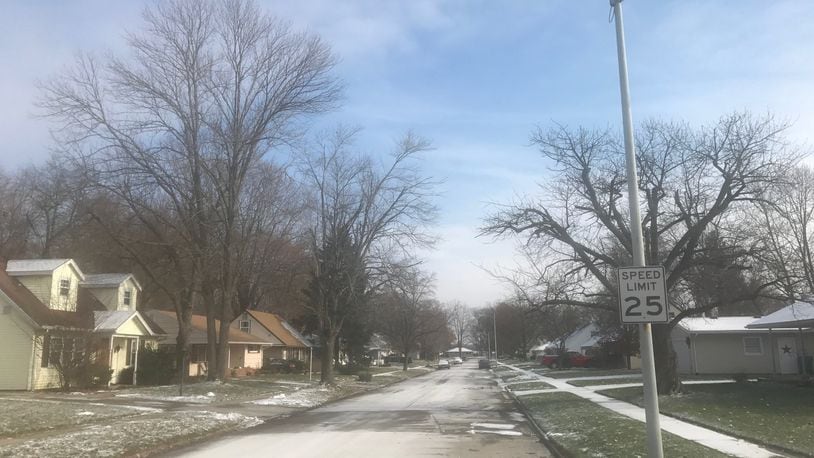“Safety is probably the biggest advantage,” Bergstresser said. “On the streets that we have installed them, there’s a better night-time visibility. They’re brighter, more energy efficient. But the improved night time visibility is the most important aspect of the upgrade.”
The project, which is maintained by Miami Valley Lighting, a subsidiary of DPL Inc., began in December 2015 when Kettering renewed their contract with the company for a 10-year agreement, budgeted at $385,000 annually.
Kettering has two types of light fixtures: those owned and maintained by Miami Valley Lighting, and those owned and maintained by the city.
Before the upgrades within MVL’s system, there were two different types of street lights: mercury vapor and high-pressure sodium lights. Mercury vapor lights, which Bergstresser described as “outdated,” give off an orange tint and are being phased out across the country. They account for 1,450 of the lights that are being replaced.
High-pressure sodium lights are a newer type of light, but instead of having two different types of lights within the fixtures owned by MVL, Kettering opted for consistency, changing the 730 sodium lights to LED. Those upgrades cost an additional $21,000.
According to DPL Inc. communications representative Mary Ann Kabel, the switch to LED lights offers “better color rendering, since it uses a white light – the blues are blue, reds are red – staying true to the color. Unlike high-pressure sodium, which has a yellow hue.”
The lights also offer “precision direct lighting” meaning if roadways are the object of what the light is focused on, only the road way is lit.
The remaining, 970 city-owned lights may see similar upgrades, though no solutions are expected to be discussed until 2017.
Kettering pays DPL directly for their city-owned lights, as opposed to what they have agreed upon in their contract with Miami Valley Lighting. If and when the city-owned lights are replaced with LED bulbs, Bergstresser expects the city to see long-term savings on their energy usage, though how much has not been determined.
“It comes down to a financing issue,” Bergstresser said. “It’s a pretty significant capital outlay to upgrade everything at once. We’re looking at options to finance and are exploring those options.”
About the Author
